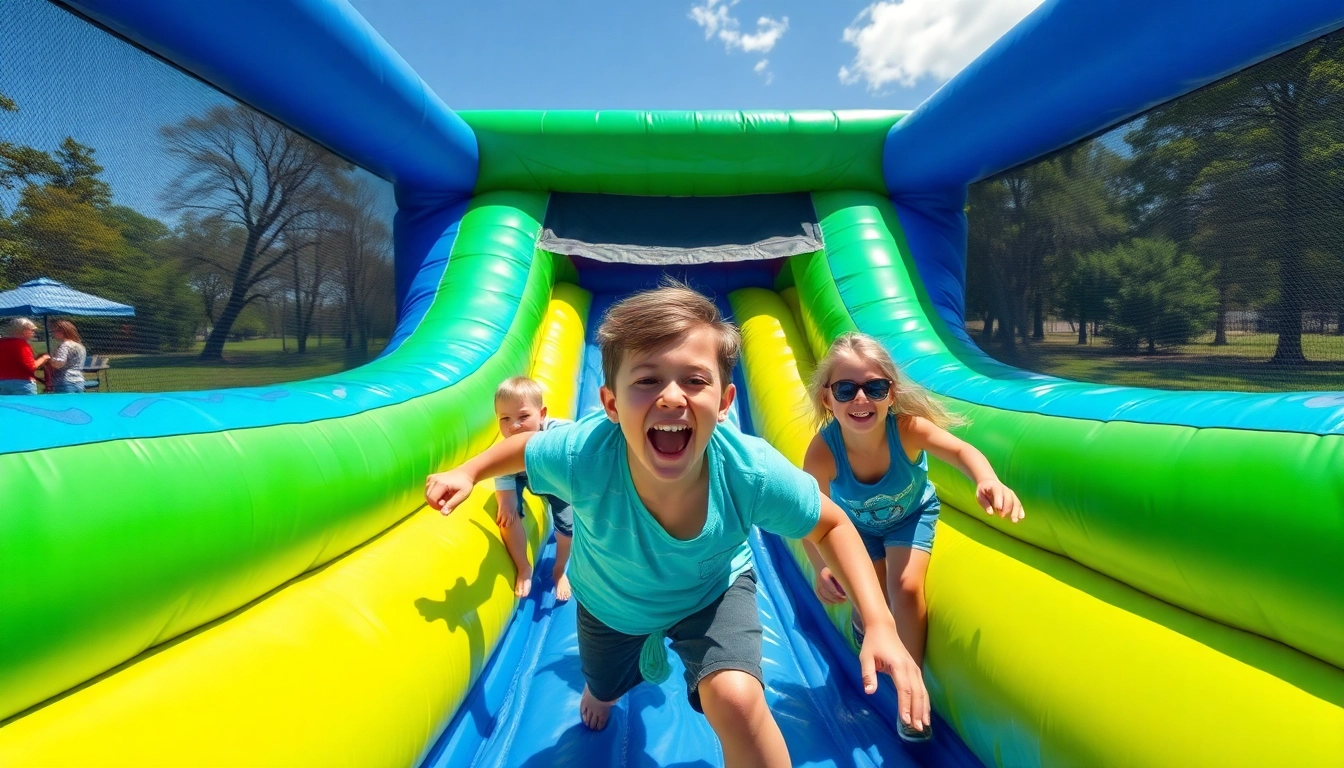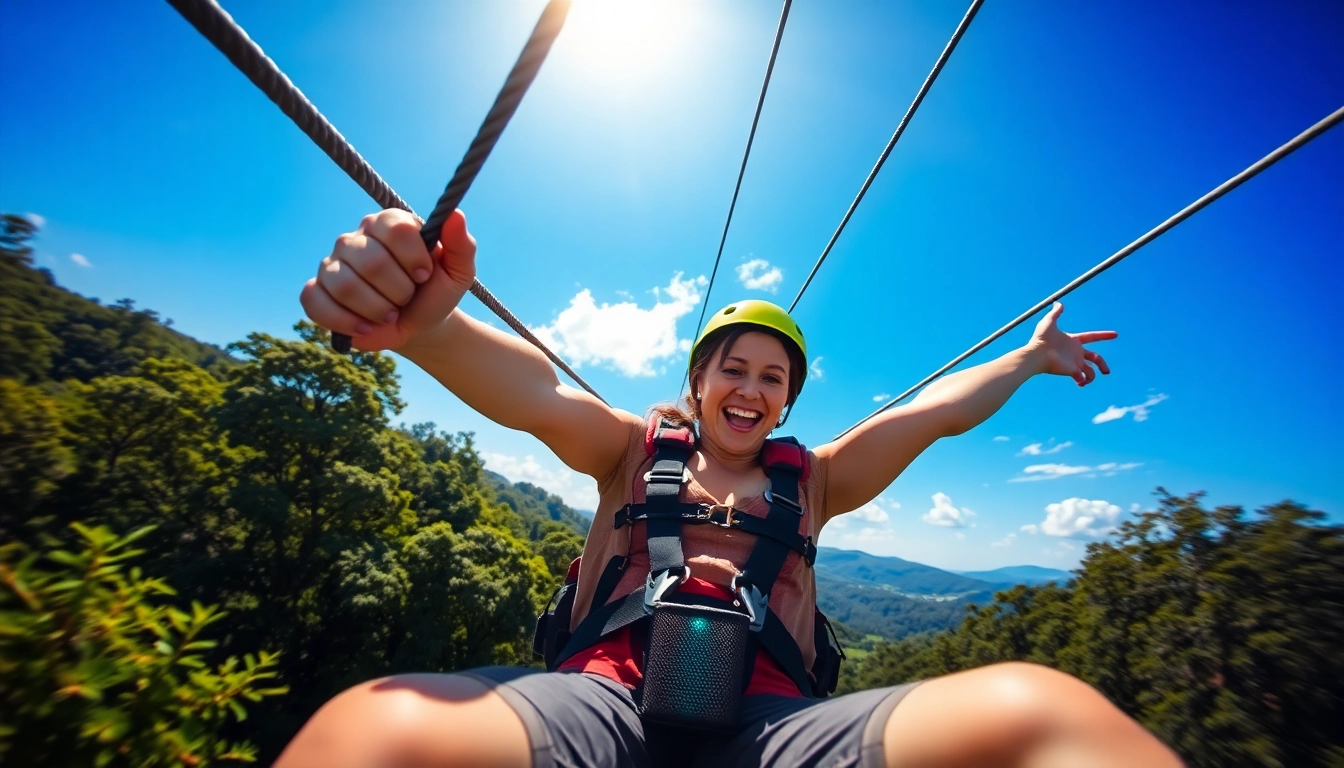Inflatable obstacle courses have become a staple for various events, captivating the attention and excitement of participants of all ages. These colorful, oversized structures not only provide a thrilling challenge but also foster teamwork, competition, and physical activity, making them excellent additions to parties, festivals, and corporate team-building events. If you’re looking to make your next event an unforgettable experience, understanding the ins and outs of inflatable obstacle courses is your ticket to success. For an extensive selection of inflatables, including an Inflatable Obstacle Course, dive into this comprehensive guide that outlines everything you need to know.
Understanding Inflatable Obstacle Courses
What is an Inflatable Obstacle Course?
An inflatable obstacle course is a large, inflatable structure designed to test the agility, strength, and endurance of participants through a series of physical challenges. These courses typically include slides, tunnels, hurdles, and climbing walls, providing an engaging way for individuals or teams to compete and have fun. Many inflatable obstacle courses can accommodate multiple participants simultaneously, enhancing the competitive spirit and allowing for races or challenges among friends and family.
Benefits of Inflatable Obstacle Courses for Events
Incorporating inflatable obstacle courses into events offers numerous benefits, including:
- Physical Activity: These courses promote exercise in a fun way, encouraging participants to be active while enjoying themselves.
- Team Building: Inflatable obstacle courses foster teamwork as participants often need to collaborate to navigate the challenges successfully, making them ideal for corporate events or birthday parties.
- Entertainment Value: The sheer excitement of inflatable obstacles captures the attention of attendees, keeping them engaged throughout the event.
- Versatility: Suitable for various occasions, inflatable obstacle courses can be tailored to fit themes and age groups, making them adaptable for different audiences.
- Memorable Experiences: They create last-minute memorable moments that guests talk about long after the event is over.
Choosing the Right Inflatable Obstacle Course
Selecting the appropriate inflatable obstacle course for your event involves a few key considerations:
- Age and Skill Level: Ensure that the chosen course is suitable for the participants’ ages and physical abilities to encourage maximum enjoyment and safety.
- Space Requirements: Evaluate the available space at the venue. Inflatable courses can vary significantly in size, so it’s important to choose one that fits your site without overcrowding.
- Theme and Branding: Consider the event’s theme. Some inflatable courses come with themed designs or customization options that can reinforce your event branding.
- Safety Features: Look for courses that include safety features, such as soft edges, durable materials, and sidewalls to prevent falls.
- Rental Provider Reputation: Research rental companies to choose a reputable provider that offers quality equipment and good customer service.
Planning Your Event with Inflatable Obstacle Courses
Best Practices for Event Setup
Effective planning is crucial for ensuring a smooth setup for inflatable obstacle courses. Here are some best practices to follow:
- Site Assessment: Conduct a thorough assessment of the event space before installation, ensuring that the ground is level and clear of debris or sharp objects.
- Clear Pathways: Designate clear pathways for participants to enter and exit the inflatable course safely to prevent congestion.
- Equipment Safety Checks: Perform inspections on inflatable equipment upon arrival to check for tears, structural integrity, and cleanliness.
- Staff Supervision: Ensure that trained personnel are present to oversee the inflatable course, assist participants, and address any safety concerns as they arise.
- Accessible Amenities: Provide nearby facilities, such as restrooms and hydration stations, to enhance the participant experience.
Safety Considerations for Inflatable Rentals
Safety is paramount when hosting an event with inflatable obstacle courses. Key considerations include:
- Age Restrictions: Implement and enforce age limits to ensure the safety of all participants.
- Weather Conditions: Monitor weather conditions closely. Inclement weather can affect the safety of inflatable setups, so be prepared to cancel or reschedule if necessary.
- Informed Participants: Brief participants on safety rules and best practices before they enter the inflatable course.
- Emergency Procedures: Establish clear emergency protocols and ensure onsite personnel are trained to handle potential accidents or injuries swiftly.
- First Aid Availability: Keep a first aid kit accessible and have trained staff available to respond to potential injuries.
Budgeting for Inflatable Obstacle Course Rentals
When planning your event, budgeting for inflatable rentals requires consideration of several factors:
- Rental Costs: Obtain quotes from different providers and compare costs. Rental fees can vary significantly based on the type and size of the obstacle course.
- Delivery and Setup Fees: Factor in any additional charges for delivery, setup, and takedown. Some companies include this in the rental price, while others do not.
- Insurance and Deposits: Consider any insurance fees or deposits required by the rental company to cover damages or liabilities.
- Staffing Costs: If you require staff on-site for maintenance or supervision, include these labor costs in your budget.
- Additional Amenities: Budget for additional features like safety mats, signage, or assistant personnel, if needed.
Types of Inflatable Obstacle Courses
Traditional vs. Themed Inflatable Courses
Inflatable obstacle courses can be broadly categorized into traditional and themed varieties:
- Traditional Courses: These focus on classic designs with straightforward challenges such as walls, slides, and nets. They are ideal for any event and cater to a wide range of participants.
- Themed Courses: These can resemble castles, pirate ships, or other imaginative designs, enhancing engagement through visual appeal. Tailoring the design to fit an event’s theme can significantly improve the overall experience.
Popular Features to Look For
When selecting an inflatable obstacle course, consider these popular features that enhance enjoyment and safety:
- Variety of Challenges: Look for courses with a mix of slides, tunnels, and climbing sections, catering to different skill levels.
- Interactive Components: Consider inflatable courses that incorporate games or friendly competition elements, such as scoring systems or timed runs.
- Bright Colors and Designs: Aesthetically pleasing courses attract more participants, creating a vibrant atmosphere.
- Durability Features: Ensure the course is made from high-quality materials designed to withstand heavy use.
- Easy Setup and Takedown: Choose inflatable courses that can be set up and dismantled quickly to optimize your event schedule.
Age-Appropriate Options
Not all inflatable obstacle courses are suitable for all ages, thus it’s essential to select age-appropriate options:
- For Young Children: Opt for smaller courses with gentle slopes and fewer obstacles to prevent accidents and injuries.
- For Teens: Inflatable courses targeted at teenagers may feature more complex designs with challenging elements, such as higher slides and tighter spaces.
- For Adults: Choose courses designed with agility challenges and team-based components that appeal to older audiences and provide an exhilarating experience.
Marketing Your Inflatable Obstacle Course Event
Effective Social Media Strategies
Promoting your event involves effective marketing strategies that reach your target audience. Social media is a powerful tool for this purpose. Consider these tactics:
- Visual Content: Use vibrant images and video content showcasing the inflatable obstacle course in action to engage potential attendees.
- Engagement Campaigns: Run contests or challenges tied to your event to drive interest and maximize online engagement.
- Event Countdown: Create buzz leading up to the event by posting countdown graphics and reminders across platforms.
- Drive Paid Ads: Invest in targeted advertisements on platforms like Facebook and Instagram to reach a specific audience demographic focused on event interests.
- Live Interaction: Host live events or Q&As on social media leading up to the event to provide updates and answer questions.
Local Advertising Techniques for Maximum Reach
In addition to digital marketing, traditional local advertising can significantly increase visibility:
- Community Boards: Post flyers in local establishments such as cafes, community centers, and schools.
- Local Newspapers and Magazines: Consider ads in print publications that reach your target demographic.
- Partnerships: Collaborate with local businesses or organizations to promote your event jointly.
- Direct Mail: Use direct mail postcards inviting community members to the event, complete with QR codes or links for easy registration.
- Public Announcements: Engage local radio stations to announce the event, generating community awareness.
Engaging Your Audience with Promotions
To attract more participants, consider integrating engaging promotions into your marketing strategy:
- Early Bird Discounts: Offer discounted rates for participants who register in advance, incentivizing early sign-ups.
- Group Rates: Provide special pricing for larger groups, encouraging families, friends, and colleagues to attend together.
- Referral Bonuses: Implement a referral program where attendees receive a discount for bringing friends.
- Themed Events: Host themed days or competitions that incorporate special features or costume requirements to boost excitement.
- Free Giveaways: Organize contests for free tickets or merchandise linked to the event, stimulating interest and social sharing.
Measuring Success: Performance Metrics
Gathering Feedback from Participants
After your event, collecting feedback from attendees is crucial to understanding your success and areas for improvement:
- Surveys: Provide post-event surveys either online or on-site to gather information on participants’ experiences.
- Social Media Engagement: Monitor comments, shares, and overall engagement on your social media platforms as a measure of participant satisfaction.
- Direct Conversations: Encourage face-to-face discussions post-event to gather candid feedback from attendees immediately.
Analyzing Event Attendance and Engagement
Metrics around attendance and engagement provide clarity on your event’s reach and effectiveness:
- Registration Numbers: Track the total number of registrants and correlate that data against attendance to evaluate effectiveness in your marketing efforts.
- Duration of Participation: Monitor how long participants engaged with the inflatable course, which can indicate enjoyment levels.
- Demographic Data: Collect data on attendees’ demographics to refine future marketing strategies targeting specific audiences.
Adjusting Future Rentals Based on Insights
Using insights gained from feedback and engagement analysis, you can refine your approach for future events:
- Course Selection: Choose different obstacle courses based on the preferences noted from previous events.
- Marketing Channels: Adjust your marketing strategies to focus on more productive channels that yielded higher engagement rates.
- Pricing Adjustments: Re-evaluate your pricing strategy based on customer feedback to ensure value perception aligns with offerings.
- Entertainment Add-Ons: Consider adding extras, such as food trucks, live entertainment, or contests, based on attendee interests voiced through feedback.



